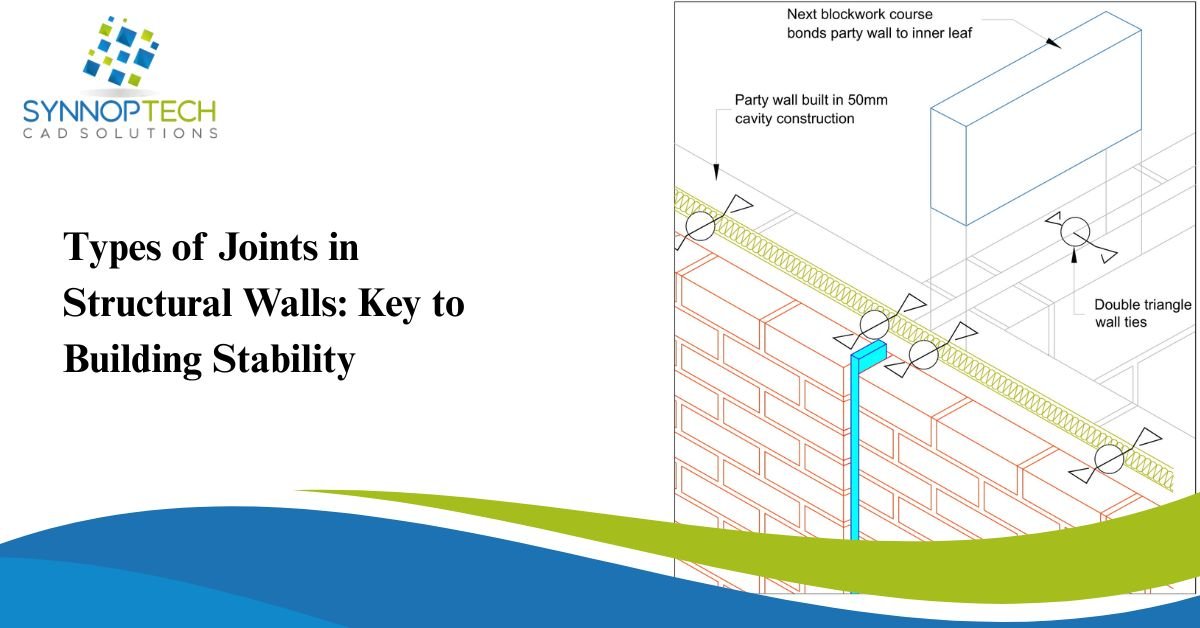From the perspective of structural mechanics and architecture, joints in structural walls are of the utmost importance in ensuring proper building integrity and safety. Joints are critical in providing the required movement to avert flexural cracks, structural harm, and damage to the building. Understanding the different types of joints applied into structural walls can help builders to mitigate issues of cracks, thermal stress, seismic activity, and settlement.
Our focus in this article will be the different types of patterns of joints found in structural walls, their associated functions, and their usefulness in construction.
1. Expansion Joints
Expansion joints are used to mitigate the gaps created through thermal stress, moisture, and settlement. Expansion joints along other walls are critical in ensuring movement along structural parts without causing structural damage.
Function:
- In order to avert flexural cracks in the structural walls during thermal stress
- In order to accommodate changes in content that occur as materials expand or contract.
- In order to avert damage to the building during thermal stress and moisture-related movement.
Where Used:
- In large buildings, bridges, or elongated walls that undergo thermal stress.
- In regions with severe weather conditions with high thermal movement.
2. Control Joints.
Control Joints are meant to manage the location and development of cracks, which may appear because of concrete wall shrinkage. These joints are created deliberately during construction to manage the depth and direction of the cracks so that they do not develop into larger issues.
Function:
- To manage the cracking of walls as concrete cures and shrinks.
- To design predefined zones of weakness where the cracks should develop so as to avoid random fracturing.
- To preserve as much as possible the
- visual beauty and symmetry of the structure.
Where Used:
- In shrinkage and movement-dominant concrete walls.
- In locations where a clean breakup or intentional cracking is required, such as the architectural features or finishing surfaces.
3. Construction Joints.
Construction joints are installed at the locations where the construction activities are paused and resumed. These joints are necessary for further development of the structure after the construction pause.
Function:
- To define the interface between two construction phases.
- To enable joining different parts of a building or a wall.
- To ensure a proper bond between the old concrete and the new concrete during the construction process.
Where Used:
- In extensive projects where it is impossible to continuously pour concrete.
- In skyscrapers and bridges that are constructed gradually in phases.
4. Movement Joints
Movement joints are meant to accommodate physical changes in a structure, such as settlement, expansion, or seismic activity. Movement joints permit relative wall movement without the transfer of stresses to surrounding structural elements.
Function:
- Absorb movement from thermal expansion or contraction, wind, and settlement of the structure.
- Prevent damage to surrounding walls, floors, and ceilings that may result from building shifts.
- Preserve the strength and stability of the structure while allowing movement that is natural to the building.
Where Used:
- In large structures, tall buildings, or regions with high seismic activity.
- In areas where foundation settlement or shift is anticipated.
5. Slip Joints
Slip joints permit a certain amount of relative displacement between two parts of a building. They are used in areas where two structural elements must move independently with respect to one another. Slip joints permit one part of the structure to move over another part without damage.
Function:
- Permit motion between two structural components.
- Permit movement in the structure from settlement, thermal changes, and seismic activity.
Where Used:
- In regions with heavy activity, such as seismic zones, or regions where settling foundations would differ.
- In large, prefabricated buildings where the interfaces need to permit some controlled movement without affecting the overall balance of the structure.
6. Seismic Joints
Seismic joints are used in areas prone to earthquakes for earthquakes to release energy. These make sure buildings are protected during earthquakes, as they permit wall movement to happen freely and with shocks.
Function:
- To enable multi-zoned buildings for better isolation and movement without damage during earthquakes.
- Permit buildings to sway and flex without structural damage during flexing and earthquakes.
- Lessened by the risk of damage by absorbing seismic forces and distributing them.
Where Used:
- Areas with earthquakes zoned as frequent or expected.
- In high-rise buildings, bridges, and major constructions.
7. Butt Joints
Butt joints are the simplest form of joint for when two walls meet end to end. These joints are used in partitions or in areas with low movement to be more rigid.
Where It’s Used:
- In partitions, non-load-bearing walls, or areas where minimal stress and motion are likely to occur.
- In provisional walls or primary frameworks where greater ease of movement is not preferable.
The various types of joints in structural walls are important to the stability, elasticity, and endurance features of a building. Each joint is designed to efficiently accommodate some specific function, thermally induced movements, cracking, or even energy released during earthquakes. Knowledge of building joints and their correct use increases the service life of the structure and avoids costly damages.
For construction projects, it is essential to coordinate with structural engineers to identify the correct types of joints based on the requirements of the building and its location. This guarantees, in a long useful life of the building, the safety of the users and the comfort of the occupants.


